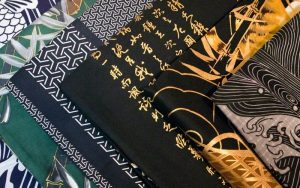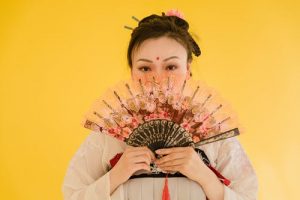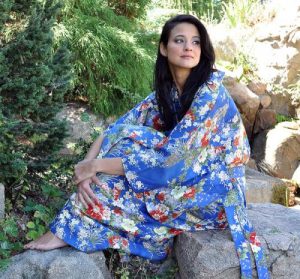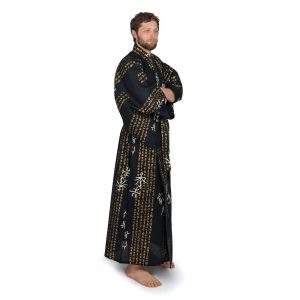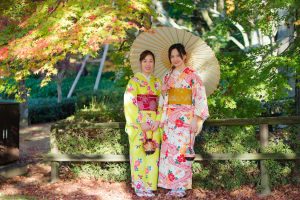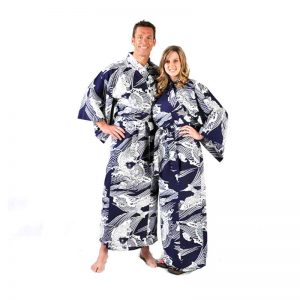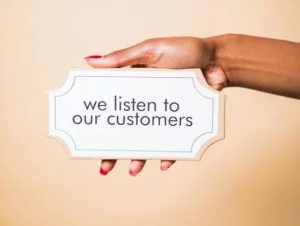The Happi Coat is a fascinating garment steeped in history, cultural significance, and evolving uses that merge tradition with contemporary fashion. Whether you’re a Japan enthusiast, a kimono lover, or simply someone looking for elegant yet comfortable loungewear, the Happi Coat is a one-of-a-kind addition to your wardrobe. This blog takes you on a rich and immersive exploration of the Happi Coat’s evolution, offering insights into its significance, styling tips, care, and why you might want to call one your own.
A Brief History of the Happi Coat
The Happi Coat has been a cherished part of Japanese culture for centuries. Originally worn by workers and festival participants, the Happi Coat was adorned with symbols and family crests that denoted unity and pride. Over time, this knee-length kimono, often made of lightweight cotton, transformed into a versatile piece of Japanese fashion.
During the post-war period, the Happi Coat gained global attention, especially in the West, where it became known as the “shortie.” Women’s house coats became shorter and more casual, and today, the Happi Coat’s appeal transcends its cultural roots as a timeless blend of comfort, tradition, and personal expression.
Cultural Significance in Japanese Society
The Happi Coat plays a prominent role in Japanese festivals and ceremonial events. You’ll often spot them in vibrant parades, worn by groups to show unity and identity. Typically crafted with bold colors and patterns—such as kanji characters or family crests—they are symbols of celebration and tradition. This garment embodies the spirit of Japanese craftsmanship and respect for cultural heritage, making it a garment with deep sentimental value.
Modern Fashion Integration
Today, the Happi Coat is more than just a cultural artifact—it’s a versatile fashion statement. Its short-length design and airy fabric make it the perfect wardrobe piece for various occasions. Here are a few ways to style your Happi Coat in modern life:
- Beach or Pool Cover-Up
Transition effortlessly from a swim to lounging by the shore by pairing your Happi Coat with your favorite swimsuit. The light fabric and colorful designs make it both practical and eye-catching.
- Loungewear Chic
Whether you’re reading, listening to music, or simply relaxing at home, Happi Coats make for the ultimate sophisticated loungewear. Their knee-length fit combines comfort with a touch of elegance.
- Layered Streetwear
Make a bold fashion statement by incorporating a Happi Coat into your casual outfits. Layer it over a plain top and jeans, or elevate your look with sandals and accessories reminiscent of traditional Japanese design.
Choosing the Right Happi Coat for Every Occasion
Selecting the perfect Happi Coat is an art in itself, and at Kimono Shop, there are countless designs waiting to inspire you. Here are some tips to find the one that suits your needs:
- Elegant Simplicity: Opt for muted tones and minimal patterns when looking for a Happi Coat suitable for home or laidback occasions.
- Festival-Perfect: If you’re drawn to vibrant celebrations and parties, go bold with bright colors and intricate designs. Look for traditional motifs such as kanji or floral prints to honor the garment’s festive origins.
- Versatility in Design: For everyday wear, choose Happi Coats in neutral palettes with subtle prints. These can seamlessly blend into your wardrobe while still making a statement.
Browse the beautiful selection of Japanese Happi Coats for men and women at Kimono Shop and find one that speaks to your unique taste.
Care and Maintenance
Your Happi Coat deserves premium care to maintain its quality and beauty. To ensure your garment stays as stunning as the day you received it, keep these tips in mind:
- Handle with Care: Always wash your Happi Coat using a gentle hand-wash cycle or by hand to avoid damaging intricate designs.
- Mild Detergent: Opt for a mild detergent that won’t fade the garment’s vibrant colors.
- Air Dry: Avoid exposing your Happi Coat to direct sunlight for extended periods, as this can diminish its color. Instead, air dry it in a shaded area.
By following these simple steps, you’ll keep your Happi Coat looking impeccable for years to come.
Experience the Timeless Elegance of Happi Coats
Happi Coats encapsulate the beauty of Japanese tradition, the artistry of fine craftsmanship, and the versatility of modern-day fashion. Whether you’re using it as a breezy beach cover-up, a luxurious lounge robe, or an artistic statement piece, the Happi Coat is a wearable celebration of culture and comfort.
Explore the exquisite collection of Happi Coats at Kimono Shop and discover designs that honor tradition while fitting effortlessly into today’s lifestyles. Each garment is a testament to quality and care—offering you not just a piece of clothing, but a legacy of art and history.




